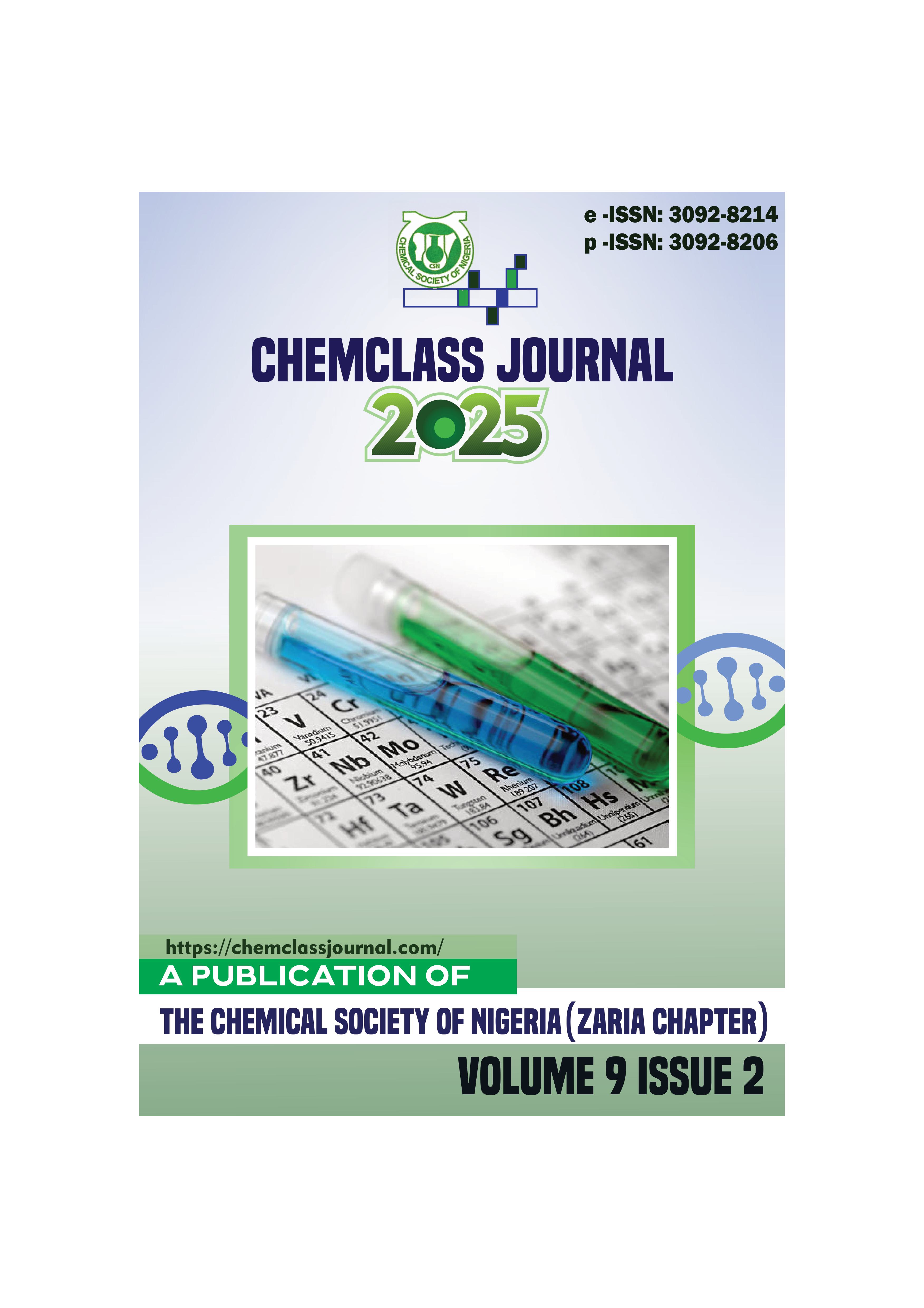Green Synthesis and Antimicrobial Activity of Spondias mombin-Derived Iron and Copper Nanoparticles Against Staphylococcus aureus and Aspergillus niger
DOI:
https://doi.org/10.33003/chemclass-2025-0902/189Keywords:
Antimicrobial , Aspergillus niger , Green Chemistry , Spondias mombin , Staphylococcus aureusAbstract
This study examines the antimicrobial capabilities of iron and copper nanoparticles synthesized using
Spondias mombin leaf extract against clinical isolates of Aspergillus niger and Staphylococcus aureus. The
iron nanoparticles (Sm-FeNPs) and copper nanoparticles (Sm-CuNPs) were synthesized using a green
approach and then characterized using techniques such as UV-Vis spectroscopy, X-Ray Diffraction
Analysis (XRD), Scanning Electron Microscopy (SEM), Fourier-transform infrared spectroscopy (FTIR),
and Particle Size Analysis (PSA). The nanoparticles were then tested at different (5–30 mg/mL)
concentrations using the agar well diffusion method. By measuring the size of the clear zones surrounding
the wells, the antimicrobial activity was ascertained. This was followed by the determination of the
minimum inhibitory concentration (MIC), which aids in determining the lowest concentration at which
microbial growth can be inhibited. From the results obtained, Sm-CuNPs exhibited quantitatively stronger
antimicrobial effects than Sm-FeNPs, producing inhibition zones ranging from 6.5–14.0 mm for
Staphylococcus aureus and 5.25–12.0 mm for Aspergillus niger, compared to 6.0–11.0 mm and 4.0–9.0 mm
respectively for Sm-FeNPs. Sm-CuNPs achieved a MIC of 10 mg/mL for both organisms, whereas Sm
FeNPs achieved a MIC of 10 mg/mL for Staphylococcus aureus and 20 mg/mL for Aspergillus niger. These
findings show that Sm-CuNPs were more effective against the two tested microbes. This is attributed to
their ability to damage cell membranes and generate reactive oxygen species (ROS) that harm microbial
cells. Since Sm-CuNPs showed significant activity against both bacterial and fungal isolates, it suggests
their potential usefulness in treating infections caused by Staphylococcus aureus and Aspergillus niger.
Moreover, the study highlights the ecological benefit of using Spondias mombin leaf extract for
nanoparticle synthesis, supporting the growing interest in eco-friendly nanotechnology for antimicrobial
applications.





 ChemClass Journal
ChemClass Journal
